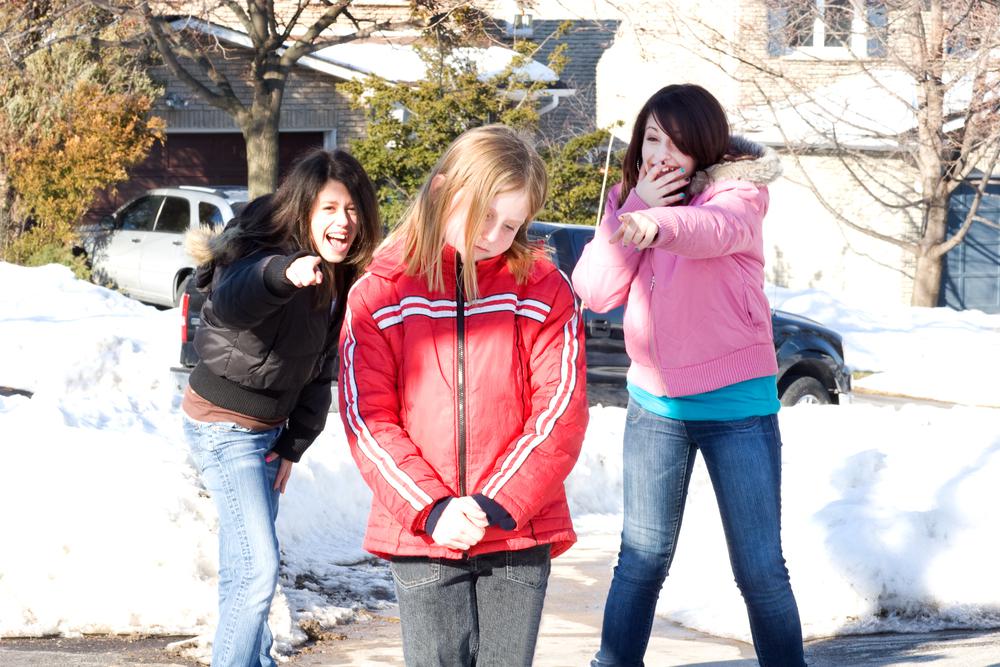A significant study from Duke, out today, provides the best evidence we’ve had thus far that bullying in childhood is linked to a higher risk of psychological disorders in adulthood. The results came as a surprise to the research team. “I was a skeptic going into this,” lead author and Duke psychiatry professor William E. Copeland told me over the phone, about the claim that bullying does measurable long-term psychological harm. “To be honest, I was completely surprised by the strength of the findings. It has certainly given me pause. This is something that stays with people.”
I’m less surprised, because as I explain in my new book about bullying, Sticks and Stones, earlier research has shown that bullying increases the risk for many problems, including low academic performance in school and depression (for both bullies and victims) and criminal activity later in life (bullies). But the Duke study is important because it lasted for 20 years and followed 1,270 North Carolina children into adulthood. Beginning at the ages of 9, 11, and 13, the kids were interviewed annually until the age of 16, along with their parents, and then multiple times over the years following.
Based on the findings, Copeland and his team divided their subjects into three groups: People who were victims as children, people who were bullies, and people who were both. The third group is known as bully-victims. These are the people who tend to have the most serious psychological problems as kids, and in the Duke study, they also showed up with higher levels of anxiety, depressive disorders, and suicidal thinking as adults. The people who had only experienced being victims were also at heightened risk for depression and anxiety. And the bullies were more likely to have an antisocial personality disorder.
The researchers also checked to see if the variation among the groups could be attributed to differences in socio-economic status, or family dysfunction/instability, or maltreatment (which they defined as physical or sexual abuse). All three groups—the victims, the bullies, and the bully-victims—had higher rates of some type of family hardship than the kids who didn’t experience bullying at all. For the victims, the risk of anxiety disorders remained strong even when taking into account family problems, though the risk of depression did not (it dropped just below statistical significance if the victims came from a stable home, Copeland said). For bully-victims, the risk of both anxiety and depression held, and for bullies, the risk of antisocial personality disorder did as well. In other words, these results suggest that bullying scars people whether they grow up in a home with two functional parents or with frequent arguing, not much parental supervision, divorce, separation, or downright abuse or neglect. It’s a finding that’s in line with other work, for example by Judith Rich Harris, who in her book The Nurture Assumption, shows that kids are very much influenced and affected by their peers.
Why does bullying have such far-reaching impact? Copeland and his team suggest the experience may change kids’ physiological response to stress, and their ability to cope. This looked especially stark for the bully-victims. “It was definitely the case that chronic bullying led to worse outcomes, but much more the case that being a bully-victim was associated with really significant problems,” Copeland said. The biggest cry for help is coming from that group. Fortunately, it’s a smaller number than victims overall.” Bully-victims, Copeland and others have found, have more problems at home and the most trouble with impulse control and aggression. Sometimes they do the dirty work for popular kids who bully to curry favor with them. “I don’t think things are working out socially for them in a lot of ways,” Copeland said.
It’s important to point out that Copeland and other researchers don’t define bullying broadly, in a way that encompasses a lot of mutual conflict among kids, or one-time fighting. Bullying is physical or verbal harassment that takes place repeatedly and involves a power imbalance—one kid, or group of kids, making another kid miserable by lording power over him. As Dan Olweus, the Scandinavian psychologist who launched the field of bullying studies in the 1960s, has been arguing for many years, this is a particular form of harmful aggression. And so the effort to prevent bullying isn’t about pretending that kids will always be nice to each other, or that they don’t have to learn to weather some adversity.
If the results of this study are dismaying because they indicate that bullying is permanently scarring, the findings also strengthen the argument for prevention. Copeland underscores this idea. “Consider me a reluctant convert, but I’m starting to view bullying the same way I do abuse in the home,” he said. “I honestly think the effects we’re observing here are just as potent. And that’s definitely not the way American researchers look at things. They want to know all about what parents are doing at home. Peers aren’t considered a priority. But these days, with all the time they spend on the Internet, kids are spending even more time with their peers, and that’s a factor we need to pay more attention to.”
